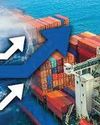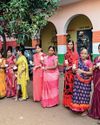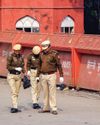Versuchen GOLD - Frei
Since 1951, only Scheduled Castes (SC) and Scheduled Tribes (ST) were counted in the census, while Other Backward Classes (OBCs) were identified through state surveys starting in 1961.
The Business Guardian
|June 05, 2025
Since 1951, only Scheduled Castes (SC) and Scheduled Tribes (ST) were counted in the census, while Other Backward Classes (OBCs) were identified through state surveys starting in 1961.

All censuses since 1951 have been done under the Census of India Act, 1948, which was passed before the Indian Constitution came into effect. The most recent Census was held in 2011, and the next one was planned for 2021 but got delayed because of the COVID-19 pandemic.
A Caste Census means collecting information about people's caste during the Census. This helps understand how different caste groups are spread across the country and gives insight into their social, economic, and educational conditions.
A caste census involves the systematic collection of data on the caste identities of individuals during a national census exercise.
In India, where caste has historically shaped social, economic, and political dynamics, such data can provide insights into the demographic distribution, socio-economic conditions, and representation of various caste groups. This information can be used to inform policies on affirmative action, reservations, and social justice.
During British rule, caste details were collected in the Censuses from 1881 to 1931. But after independence, starting with the 1951 Census, the government stopped including caste details for everyone.
After freedom, the government grouped people into four main categories based on their social and educational status: Scheduled Castes (SC), Scheduled Tribes (ST), Other Backward Classes (OBC), General category.
Since then, Census data has included numbers for SCs, STs, and religious groups like Hindus and Muslims. But people in other caste groups, especially OBCs, were not counted in the Census.
By 1961, the central government allowed states to carry out their own surveys to identify and list OBCs.
The last full data on castes for all groups is from the 1931 Census during British rule. The 1941 Census also collected caste data, but the results were never published.
Diese Geschichte stammt aus der June 05, 2025-Ausgabe von The Business Guardian.
Abonnieren Sie Magzter GOLD, um auf Tausende kuratierter Premium-Geschichten und über 9.000 Zeitschriften und Zeitungen zuzugreifen.
Sie sind bereits Abonnent? Anmelden
WEITERE GESCHICHTEN VON The Business Guardian

The Business Guardian
India's exports stay strong with 4% rise
India registered sustained export growth in the first seven months of FY2025, reflecting resilience in the face of global economic uncertainty.
1 mins
November 18, 2025

The Business Guardian
CYIENT, AZIMUTH UNVEIL INDIA- FIRST INDIGENOUS POWER CHIP
Cyient Semiconductors and Azimuth AI have unveiled India's first indigenously designed power semiconductor chip for smart meters and advanced edge applications.
2 mins
November 18, 2025

The Business Guardian
Delhi shivers at 8.7°C, coldest November minimum in three years
Delhi’s minimum temperature on Monday dropped to 8.7 degrees Celsius, 3.6 notches below normal and the lowest recorded in November in the last three years, according to the India Meteorological Department (IMD).
1 min
November 18, 2025

The Business Guardian
BIHAR MANDATE: FROM ‘IDENTITY POLITICS’ TO ‘DEVELOPMENTAL IDENTITY’
The ‘ message, the messenger, and the management’ together set a new benchmark for electoral success in the Bihar Assembly elections.
4 mins
November 18, 2025

The Business Guardian
Singapore, SingHealth & TN strengthen maternal-child health collaboration
The Singapore International Foundation (SIF), SingHealth, and the Department of Public Health and Preventive Medicine (DPHPM), Government of ‘Tamil Nadu, today marked the conclusion of the second phase of the Enhaneing Maternal and Child Health Services (EMCH) Project.Launched in 2015, the EMCH Project aims to strengthen maternal and child healthcare across Tamil Nadu.
1 min
November 18, 2025

The Business Guardian
Vaishnaw outlines India’s next electronics push
Union Minister for Electronics and IT Ashwini Vaishnaw on Monday laid out a clear roadmap for the next phase of India’s electronics manufacturing growth, stressing that industry leaders to focus on three critical areas where they must take the lead.His three key asks to industry members were building strong design teams, achieving Six Sigma quality, and deepening domestic supply chains under the Atma Nirbharta initiatives.
1 mins
November 18, 2025

The Business Guardian
US-India trade deal nears first-phase closure
India remains engaged with the United States on the proposed Bilateral Trade Agreement (BTA), and the first tranche of the deal, focused on addressing reciprocal tariffs, is now “near closure”, Commerce Secretary Rajesh Agrawal said on Monday while releasing the October trade data. Agrawal noted that India and the US have been holding virtual discussions on the BTA for months.
2 mins
November 18, 2025

The Business Guardian
Encrypted chats, weapon trail expose inner circle of terror module
Investigators probing the terror module allegedly linked to Dr Umar, whom security agencies identified as the one who drove the explosive-laden car which went up in flames in the blast on November 10 at Red Fort, have found evidence of an organised internal structure, encrypted communication channels and coordinated movement of weapons, official sources said on Monday.
1 mins
November 18, 2025

The Business Guardian
Self-employment drives India’ s job growth: HSBC report
Self-employment has emerged as the strongest engine of India’s job growth over the past six years, according to HDFC Bank’s Employment Trends in India report.
1 mins
November 18, 2025

The Business Guardian
Two held for duping woman in Rs 3.38 lakh stock investment cyber fraud
The Delhi Police have arrested two women and bound down a third for allegedly cheating a 42-year-old woman of Rs 3.38 lakh by offering fake high-return stock market schemes, officials said on Monday.
1 min
November 18, 2025
Listen
Translate
Change font size
